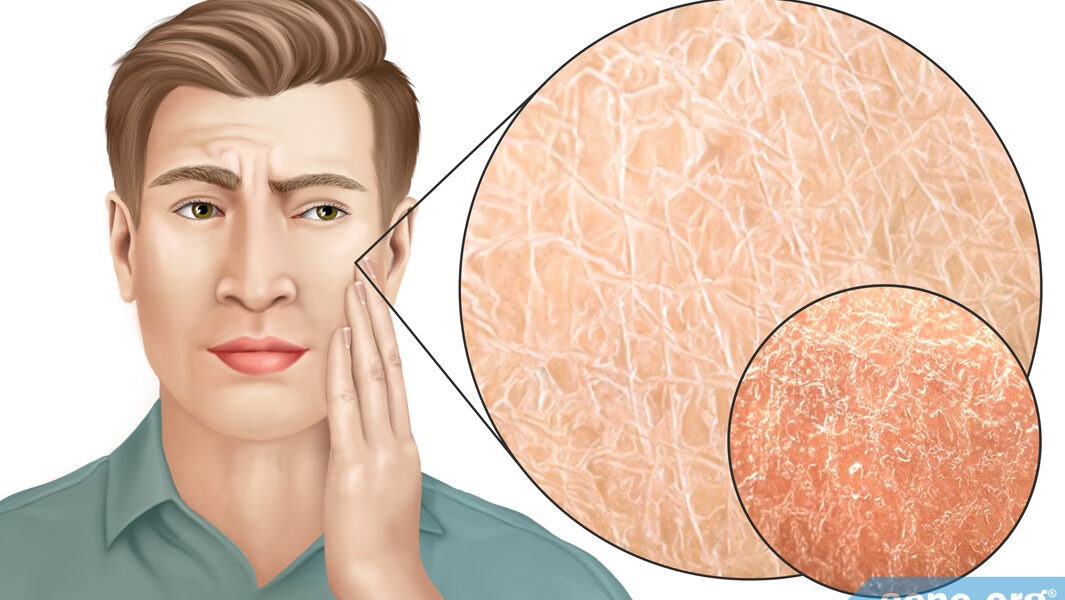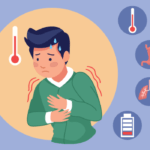Dry skin is a typical problem that many individuals experience, especially during the winter months. Dry skin can make your skin look and feel rough, flaky, itchy, or cracked. It can also affect your body’s ability to fight infections, heal wounds, and maintain a healthy appearance. In this blog post, we will answer some of the most frequently asked questions about dry skin, such as what it is, what causes it, how to treat it, and how to prevent it.
What is dry skin?
Dry skin is skin that doesn’t have enough moisture in it to keep it feeling soft and smooth. Xeroderma (pronounced “ze-ROW-derm-ah”) is a medically recognized name for dry skin. Xerosis (pronounced “ze-ROW-sis”) is defined by very dry skin.
Dry skin occurs when your skin loses too much water and becomes dehydrated. This can happen for various reasons, such as exposure to dry air, hot water, harsh chemicals, or certain medical conditions.
Dry skin can affect any part of your body, but it commonly affects your hands, arms, legs, and face. It can also affect your scalp and cause dandruff.
What are the types of dry skin?
There are different types of dry skin, depending on the cause and severity of the condition. Some of the common types are:
• Contact dermatitis. This is a type of dry skin that occurs when your skin reacts to something it touches, causing inflammation and irritation. Contact dermatitis is classified into two distinct categories: irritating and allergic. Irritant contact dermatitis happens when your skin is exposed to an irritating substance, such as bleach, detergent, or soap. Allergic contact dermatitis happens when your skin is exposed to something you are allergic to, such as nickel, latex, or perfume.
• Seborrheic dermatitis. This is a type of dry skin that occurs when your skin produces too much oil and causes a red and scaly rash on your scalp, face, or chest. This type of dermatitis is common in infants and people with oily skin or certain medical conditions, such as Parkinson’s disease or HIV.
• Atopic dermatitis. This is a type of dry skin that is also known as eczema. It is a chronic condition that causes dry and scaly patches on your skin that can itch and bleed. It is common in children and people with a family history of allergies or asthma.
• Psoriasis. This is a type of dry skin that is caused by an autoimmune disorder that makes your skin cells grow faster than normal and form thick and scaly plaques on your skin. It can affect any part of your body but usually occurs on your elbows, knees, scalp, and lower back.
• Diabetic dermopathy. This is a type of dry skin that is caused by diabetes and affects the blood vessels in your skin. It can cause brown or red patches on your legs that look like bruises.
Whom does dry skin affect?
Dry skin can affect anyone at any age, but some people are more prone to it than others. Some factors that increase your risk of developing dry skin are:
• Age. As you get older, your skin produces less oil and becomes thinner and less elastic. This makes it more vulnerable to dryness and aging signs.
• Gender. Women are more likely to have dry skin than men because of hormonal changes during pregnancy, menstruation, and menopause.
• Genetics. You are more likely to have dry skin if you have a family history of eczema or other allergic diseases.
• Climate. You are more likely to have dry skin if you live in a cold or dry climate where the humidity levels are low.
• Lifestyle. You are more likely to have dry skin if you smoke, drink alcohol, eat a poor diet, or are stressed. These factors can affect your blood circulation, hydration levels, and nutrition.
How does dry skin affect my body?
Dry skin can affect your body in various ways,
such as:
• Infections. Dry skin can make your skin more prone to cracks and fissures that can allow bacteria or fungi to enter and cause infections. Some common infections that can affect dry skin are cellulitis, impetigo, ringworm, and athlete’s foot. These infections can cause symptoms such as redness, swelling, pain, pus, or fever, and may require antibiotics or antifungal medications to treat them.
• Wound healing. Dry skin can impair your skin’s ability to heal wounds and scars by reducing the blood flow and oxygen supply to the affected area. This can delay the healing process and increase the risk of complications, such as infection, inflammation, or keloids. Keloids are raised, thickened, or discolored scars that grow beyond the original wound site. They can be painful, itchy, or unsightly, and may require surgery or injections to remove them.
• Appearance. Dry skin can affect your appearance and self-esteem by making your skin look dull, flaky, wrinkled, or discolored. It can also make your makeup look cakey or uneven.
What are the symptoms of dry skin?
Dry skin can have different symptoms depending on its severity and location. The following are some of the most prevalent symptoms of dry skin:
• Roughness. Your skin may feel coarse or sandpaper-like to the touch.
• Flaking. Your skin may shed small flakes of dead cells that can accumulate on your clothes or furniture.
• Itching. Your skin may feel irritated or uncomfortable and urge you to scratch it.
Scratching can worsen the condition by causing more damage and inflammation to your skin.
It can also introduce bacteria or fungi into your cracks or wounds and cause infections.
• Cracking. Your skin may develop small fissures or cracks that can bleed or become infected. Cracks usually occur in areas that are exposed to friction or pressure, such as your hands, feet, lips, or elbows. They can be painful and make it difficult for you to perform daily activities such as typing, walking, or eating.
• Redness. Your skin may appear inflamed or discolored due to irritation or inflammation. Redness can also indicate an infection or an allergic reaction to something you touched or applied to your skin. If you notice any signs of infection such as pus, fever, or swelling, or if you have trouble breathing or swallowing due to an allergic reaction, you should seek medical attention immediately.
• Tightness. Your skin may feel stretched or pulled after washing or bathing. This is because water evaporates from your skin’s surface and leaves it dehydrated. The tightness can also make your facial expressions look stiff or unnatural.
Where will I get dry skin on my body?
skin can affect any part of your body, but it commonly affects your hands, arms, legs, and face. It can also affect your scalp and cause dandruff. Some areas of your body may be more prone to dryness than others because they have fewer oil glands or are exposed to more environmental factors. For example,
• Your hands may be more prone to dryness because they are frequently washed with soap and water or exposed to chemicals or cold weather.
These factors can strip away the natural oils and moisture from your hands and leave them rough and cracked. To prevent this from happening, you should wear gloves when handling harsh substances or working outdoors in cold weather. You should also moisturize your hands regularly after washing them or using hand sanitizer.
• Your arms and legs may be more prone to dryness because they have fewer hair follicles than other parts of your body and lose moisture faster. To prevent this from happening, you should avoid taking long or hot showers or baths that can dehydrate your skin further. You should also moisturize your arms and legs after bathing or shaving them with a gentle lotion or cream that contains ingredients such as glycerin, hyaluronic acid, or ceramides This can help your skin maintain moisture.
• Your face may be more prone to dryness because it has more sensitive areas such as the eyes, nose, mouth, and ears that can be irritated by harsh products or weather conditions. To prevent this from happening, you should use a gentle cleanser that does not contain alcohol, fragrance, or sulfates that can dry out your face further. You should also use a moisturizer that suits your face type (dry, oily, mixed)



